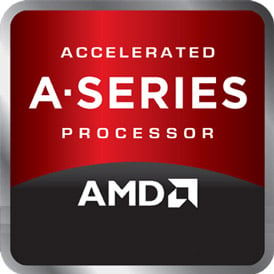 Geekbench 3, 64bit (Multi-Core)
Geekbench 3, 64bit (Multi-Core)
|
|
AMD A8-7670K
4C 4T @ 3.6 GHz
|
6343
|
|
|
Intel Pentium G3240
2C 2T @ 3.1 GHz
|
4420
|
 Estimated results for PassMark CPU Mark
Estimated results for PassMark CPU Mark
|
|
AMD A8-7670K
4C 4T @ 3.6 GHz
|
4682
|
|
|
Intel Pentium G3240
2C 2T @ 3.1 GHz
|
1937
|
 Geekbench 3, 64bit (Single-Core)
Geekbench 3, 64bit (Single-Core)
|
|
Intel Pentium G3240
2C 2T @ 3.1 GHz
|
2501
|
|
|
AMD A8-7670K
4C 4T @ 3.6 GHz
|
2124
|
 Cinebench R15 (Multi-Core)
Cinebench R15 (Multi-Core)
|
|
AMD A8-7670K
4C 4T @ 3.6 GHz
|
250
|
|
|
Intel Pentium G3240
2C 2T @ 3.1 GHz
|
236
|
 Cinebench R11.5, 64bit (Multi-Core)
Cinebench R11.5, 64bit (Multi-Core)
|
|
AMD A8-7670K
4C 4T @ 3.6 GHz
|
3.3
|
|
|
Intel Pentium G3240
2C 2T @ 3.1 GHz
|
2.6
|
 Cinebench R11.5, 64bit (Single-Core)
Cinebench R11.5, 64bit (Single-Core)
|
|
Intel Pentium G3240
2C 2T @ 3.1 GHz
|
1.3
|
|
|
AMD A8-7670K
4C 4T @ 3.6 GHz
|
1.0
|

